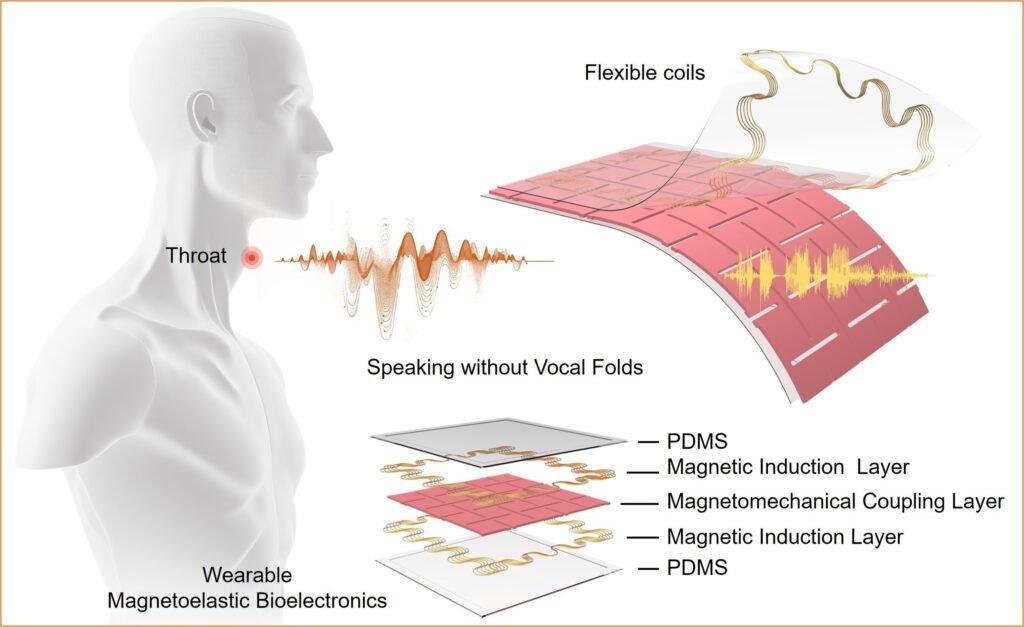Researchers developed throat patch that enables speech without vocal cords
Researchers at the University of California developed a throat patch that enables speech without vocal cords. This research aimed to enable patients to speak without vocal cords by developing a self-powered patch that translates muscle movements into speech using machine learning (AI).
Jun Chen is a professor of bioengineering at the Univerisity of California, Los Angeles. He inspired the concept of an inexpensive speech-enabling device as he noticed his vocal cords were becoming exhausted from giving lectures for several hours of extended periods.

Following this, he started thinking about ways to enable people to talk without using their vocal cords. Hence, Professor Jun and his colleagues developed an inventive patch that sticks to the user’s throat and uses artificial intelligence (AI) to translate their muscle movements into voice.
This throat patch is sweat-resistant, which means sweat can’t damage it. This patch uses the user’s muscle movements to create electricity. So, it does not need a battery to work. Moreover, it is a lightweight device.
It is a 7.2-gram self-powering throat patch. Five thin layers make up this tiny device. Some of those are made from materials that react to little movements of the throat muscles.
Those materials react by generating electrical signals when the user makes the motions required to pronounce a word. These signals can later be converted into speech using machine learning technology.

Silicon and micromagnets make the inner layer of the patch. It creates a magnetic field that changes in response to muscle movements. However, soft and flexible silicone material makes the outside layers of the patch.
The coils of the copper wire make the other remaining middle layers. Hence, they change the magnetic field into electrical signals. Researchers fed these electrical signals to a machine-learning algorithm that turned them into spoken words.
Following this method, Professor Jun and other researchers developed a throat patch that enables speech. However, the Nature Scientific Journal has published this research study.
Read More:
- Sea creature turns into a baby when it is stressed out showing time travel
- Realme Narzo 70 Turbo 5G launch date, features, specifications & price
- European Space Agency printed 3D metal part in space for first time
- Earth’s mysterious Alaska triangle where over 20,000 people disappeared
- Philips Hue launched a new smart lighting solution for kitchen
- NASA to launch life-searching spacecraft to Jupiter’s moon Europa
Share this content:










Post Comment